Check out some books by your tutor Fiona Veitch Smith … (click on the book covers to find out more)
 This is the fourth installment in our free creative writing course. We have already looked at releasing your creativity, how to write a short story and writing from a point of view.
This is the fourth installment in our free creative writing course. We have already looked at releasing your creativity, how to write a short story and writing from a point of view.
This session we will look at how to bring your writing to life. We will focus on three basic principles that will help bring sparkle to your text:
Active vs passive writing
What is it that makes writing dynamic? Why do you feel energised by one text and bored to death by another? We all have the same vocabulary at our disposal (at last count there were over 600,000 words in the Oxford English Dictionary) but it is how we use them that differs.
Consider the following sentence:
The ball was thrown by John.
This is a passive sentence. To activate it bring the subject of the sentence (John) forward. Now we have:
John threw the ball
That’s better. The sentence has more energy, but it’s still a bit bland. Let’s consider choosing some more dynamic words. There is not much we can do with ‘John’ or ‘ball’ (unless we change it to spherical orb which would be overkill) but the verb ‘threw’ offers us more possibilities.
John tossed the ball – a casual act
John chucked the ball – an aggressive act
John propelled the ball – a deliberate act
John hurled the ball – a desperate act
John hoyed the ball – a forceful act taking place in the North East of England!
Exercise 11:
Take each of the above sentences and use them as an opening for the first paragraph of a story. How do the different verbs change the possibilities of the story?
Please note that there should be no need for an adverb (a word that describes the verb) as the verb itself should carry the meaning. For example, ‘John chucked the ball angrily’ is unneccesary as ‘chucked’ already contains an implication of anger. If you were to write ‘John threw the ball angrily / casually / clumsily ‘ I would tell you to find a verb that implied anger / casualness / clumsiness etc and ditch the adverb.
A word’s dynamism relates to the amount of communicated energy it contains. This can be fast or slow, violent or peaceful, harsh or gentle. Sometimes we would like to slow the reader down so that they can ponder the text. This, however, is no excuse for passive writing. A passage can be slow and active at the same time. Consider this passage from C.S. Lewis’ The Magician’s Nephew, the first book in the Narnia Chronicles:
The Lion was pacing to and fro about that empty land and singing his new song. It was softer and more lilting than the song by which he had called up the stars and the sun; a gentle, rippling music. And as he walked and sang, the valley grew green with grass. It spread out from the Lion like a pool. It ran up the sides of the little hills like a wave. In a few minutes it was creeping up the lower slopes of the distant mountains, making that young world every moment softer. The light wind could now be heard ruffling the grass.
Slow words: empty, singing, softer, lilting, gentle, rippling, green with grass, pool, little, wave, creeping, lower, distant, softer, light, ruffling etc …
Active words: pacing, new, called up, walked, grew, spread out, ran, making, wind etc …
Do you see that even a gentle passage like this can be full of energy? This is due to the choice of words and the use of senses which we will be looking at later.
Exercise 12:
Activate this sentence while still keeping the tranquility of the image:
The day was very sunny so the dog decided to lie down to sleep.
Using all your senses
Consider your five senses: Sight, Sound, Smell, Touch, Taste.
It is through these senses that we connect with our world. So by evoking one or more of the senses in a passage, your reader should connect with your fictional world. That way, reading moves beyond the intellect and into the body itself – it becomes a physical, ‘lived’ experience. This is called ‘somatasthesia’
Exercise 13:
Look at the following passage from ‘Blood Wolf’ by S.M. Stirling (The Year’s Best Science Fiction and Fantasy for Teens). What senses are evoked? How has the writer achieved it?
His back hit the rough brickwork of the wall, and he scrabbled upright, lashing out left and right with his fists. Another man’s fist thudded into the tough muscle of his belly, and he felt the night’s drinking and the long-ago meal leave in a rush of sour bile. That saved him; Arktorax stepped back with an exclamation of disgust, and Kreuha turned and turned again along the wall, as if he were rolling down a slope. His hand found the latch and he fell forward with a splash into a muddy street under a thin cold rain that shook him back to the edge of consciousness. He rose, plastered with a thin layer of earth and horsedung churned to gray slime, and turned to meet the rush from the tavern, trying to scream out the war-howl of his clan.
Did you notice that there are almost no visual images in this passage? True, we can ‘see’ the whole thing in our mind’s eye because of the power of the other senses, but Stirling does not actually describe what something looks like. Why do you think this is? Which is the dominant sense and why?
The key to this kind of writing is the judicious use of adjectives and dynamic verbs. But don’t overladen your text – like herbs and spices, a little goes a long way! Choose words that have layers of meaning. Consider, for example, the following sentence:
The axe sliced into the hard wood
vs
The axe slammed into the unyielding wood.
What layers of meaning are added by changing the verb and adjective?
The axe slammed viciously into the hard, unyielding wood, slicing and splintering the log into jagged shards
would be overkill.
Sensual writing also evokes emotion and associated memories. This is known as synaesthesia, whereby one sense is stimulated but manifests through another. For example, some people see music as colour (for them, a ‘blue’ note is more than just an expression). By using synaesthetic techniques you ‘encode’ a passage with layers of meaning. For example, whenever TS Elliot wrote of the smell of irises, he evoked the emotions associated with death and loss (there were irises at his mother’s funeral). The smell of irises, then, became a shorthand for the whole range of emotions and memories associated with the loss of a loved one.
Exercise 14:
Consider a piece of your own writing. Do you tend to overwrite or underwrite descriptive passages? Do you favour one sense over others? Which sense / senses do you neglect?
Rework the passage utilising as many of the senses as possible. Remember though, not every passage has to have all five senses in it.
Show Don’t Tell
The most basic mistake of novice writers is that they tell the reader what happened rather than showing them. Take this paragraph:
Blanche felt like she was going to lose control at any moment. She tried her hardest to hide it from the unwelcome guests who had dropped in for a cup of tea and a chat. Blanche wished they would just go away.
This is classic telling not showing. The narrator, in third person (see writing from a point of view), is telling us how he or she thinks Blanche is feeling. It would be better to show us:
Blanche steadied her hand as she flicked the kettle on, resisting the urge to toss boiling water over her guests. ‘Hope you don’t mind us dropping in like this,’ said the woman-from-two-doors-down.
‘Not at all,’ said Blanche through sugar-cube teeth.
Exercise 15:
Rewrite this paragraph so that it shows rather than tells:Bobby Brewster was bored. He couldn’t wait until the school bell rang. He struggled to hide it so Mr Jones, his teacher, became very cross.
Now find a piece of your own writing that tells but doesn’t show and rework it.
Next week’s creative writing course topic is about writing characters.
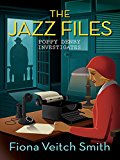
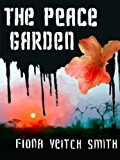
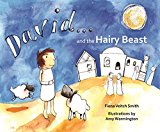
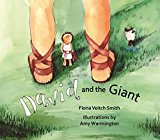
 Welcome to The Crafty Writer's free online creative writing course, presented by Fiona Veitch Smith, a freelance journalist, editor, author, playwright, screenwriter and writing teacher. I hope that you'll see a dramatic improvement in the quality of your writing as you work through this course.
Welcome to The Crafty Writer's free online creative writing course, presented by Fiona Veitch Smith, a freelance journalist, editor, author, playwright, screenwriter and writing teacher. I hope that you'll see a dramatic improvement in the quality of your writing as you work through this course. 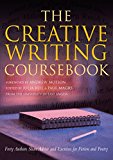
I found your website by searching for free creative workshops in my hometown. I find the material you have posted very helpful and I thank you for taking the time and putting the effort to help so many. This is one thing I struggle with, ie using active language. I am working on that. I was one of those that decided to dive right into writing a novel without writing short stroies and I know I have a way to go. But I have finished my first novel and currently editing. Editing is the most painful part. Again thank you for providing this resource.
Excerpts from my novel can be found here if anyone is interested: http://www.booksie.com/romance/novel/guulo/loving-you-was-enough-for-me
And if anyone knows of an online place where we can add excerpts please let me know, because Booksie has been slow for me thus far.
Congratulations on finishing the novel, Guulo. I’m also editing a novel at the moment – I feel your pain!
First, let me say that I truly appreciate these courses. This one is my favorite so far. It actually sparked my light bulb. Description has always been my weakness. I feel that I have great plot, but no where near enough description to make the story come alive. I’ve always either under-described, or compensated by description overkill.
“If you were to write ‘John threw the ball angrily / casually / clumsily ‘ I would tell you to find a verb that implied anger / casualness / clumsiness etc and ditch the adverb.” …. this was my “ah ha” moment.
That, combined with “show, not tell”, are two concepts, I believe, will make a significant impact on my writing.
So, thank you! I look forward to reading the rest!
Aha!
Hi. I am looking forward to all these free lessons.Have longed to write a book for a while now. I believe these course will be helpfull. I have already looked through one and found it helpful.janice Witzke.
Hi.Fiona.I just finished my 1st exercise on Bringing You;re Witing To Life.I found it not as hard as I thought it would be.The other 2 I am not sure it will be so easy. Janice.
Oh well done Janice! I think of all the exercises on the course, Bringing Your Writing to Life is the most important. So good luck with the next lot.
Happy writing
Fiona
I notice writers do as much ‘telling’ as ‘ showing’. When should one tell, and when should one show when they write? Surely to show all the time would make a piece awfully long? Thanks for a great site.
You’re right Steven, it needs to be a balance of both. You need to know when to foreground a scene (by showing) or background it (by telling). It is appropriate to tell when you want to gloss quickly over a section, provide essential but not particularly rivetting exposition or in transition or summary scenes, but these need to be interspersed with highly focused ‘showing’ scenes. Pick a writer who you feel ‘shows’ well then analyse at what point they do it. A mix of both will vary the pace of a piece of writing too.
Left a letter out of my e address before – sorry!
I LOVE THIS SESSION TOO IS WAS A GREAT HELPFUL EXCERCISES THANKS FOR YOUR HELPFUL SITE IT IS ALREADY HELPING ME.THANKS
I like this course in general but this lesson was definitely the most helpful. Thank you for that!
YOu’re welcome. It’s based on things that I’ve found the most helpful in my own writing that I’ve discovered by trial and error. Glad it’s helped.
Your course is awesome! Can you give an example of activating the dog sentence? Or perhaps you could just rate mine? I added quite a bit of extra information, but believe it still gets the mood across, but in a much more eloquent way, which is the idea, no?:
“The afternoon sun was beating down causing a terrible laziness to fall upon the neighborhood, so the weary dog resolved to lie down for a snooze under the shade of his favorite Oak tree.”
Is “The afternoon sun was beating down…” passive?
Hello Marissa, I’m afraid I don’t give feedback on exercises. If I make an exception for you I will be inundated with requests to do the same from the thousands of other students who do the course for free. Sorry. If you would like a detailed critique of a larger piece of writing please contact me to discuss the paid critiquing service. Let’s just say though, you’re on the write track Perhaps other students would like to give their opinion on your sentence. Do you think Marissa has managed to successfully activate the sentence?
Perhaps other students would like to give their opinion on your sentence. Do you think Marissa has managed to successfully activate the sentence?
Thanks so much! A group of us are using your workshops to sit around, write and become writers! I appreciate your website and help!
Hey, that’s great news! The course was initially developed with a group so feedback could be received from each other. Enjoy!
This exercise was informative enough for me to recognize that I DO tell rather than show!
This is one of the simplest and direct to the point creative writings lessons I have ever gone through. Thank you
Last night I was writing, and I was having trouble with making a character’s day go by too fast. I wasn’t too worried about it since it was only my first draft, but I still was worried about it. This lesson helped me a lot, and I think that when I rewrite it, the advice you gave here will help me.
Really great course. thanks
Thank you Fiona,
Using active grammar and a dynamic vocabulary
Using all your senses
Showing not telling
Interesting and very helpful
am Ok with Vocabulary; have to work on using senses
am ok with telling; have to work on showing
Just wanted to say that this section was particularly helpful for me.
Thanks for offering all this information for those of us aspiring.
You’re most welcome, Maria.
Thank you very much I am really finding this course helpful. Having come to a full stop on a piece of writing, I am now looking at it with a fresh approach.
Surely some narratives would work better if they are “Told” rather than “Shown”? In what sort of writings would that be preferred over the show rather than tell effect?
Meanwhile, your courses are easy to follow and quite comprehensive. I intend to fish out my old stories and take the advice gleaned from these pages to them, an attempt to give them a new lease on life.
Thank you once again for this.
Hi Viola, the ‘show don’t tell’ mantra is often misunderstood to mean ‘visual not narrative’. What it really means is what we are doing in this session – bringing your writing to life for your reader. So yes, some stories are ‘told’ in the sense of a narrator telling the story in first person. But what we don’t want is the narrator (or the writer) just telling us a sequence of events or facts. We want to be able to experience the story as it is told. That is what we mean by show don’t tell.
I would like to join, for the learning beginner writing. please help me to write better.
There is no need to join Samsam. This is the course. Just read it and work through it at your own pace.
im very much interested at bringing my writing to life. please help me.
Hi Snah, that’s what this session will do.